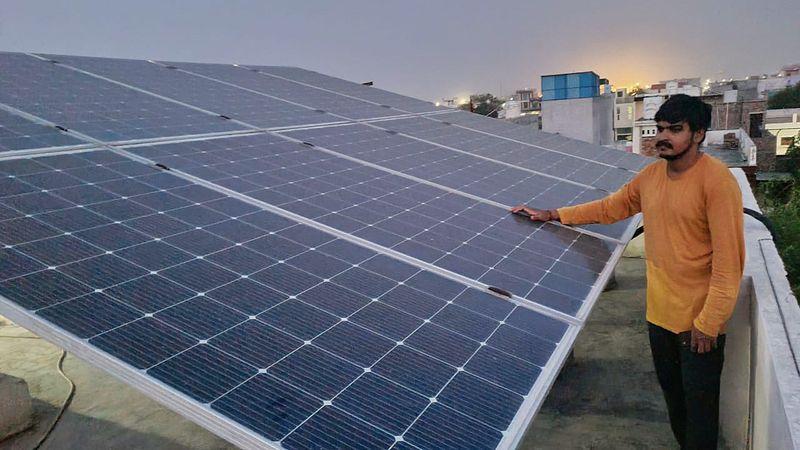
Rural households go solar to meet their daily energy needs
In a significant shift towards sustainable and renewable energy, rural households in Delhi are increasingly opting for rooftop solar systems to meet their daily energy needs. This move has not only reduced their dependence on traditional sources of energy but has also led to a significant decrease in their electricity bills.
According to data provided by TPDDL (Tata Power Delhi Distribution Limited), a total of 1,842 rooftop solar systems have been installed in its operational areas, contributing to a total metering capacity of 30.21 megawatts. This is a significant milestone in the transition to renewable energy and a testament to the growing awareness among rural households about the benefits of solar power.
One of the primary drivers of this shift is the increasing cost of traditional energy sources. With rising fuel costs and transmission losses, electricity bills have become a significant burden for many rural households. The installation of rooftop solar systems has not only reduced their energy costs but has also provided them with a reliable and sustainable source of energy.
For instance, a household in rural Delhi that previously spent Rs 5,000-6,000 per month on electricity bills is now paying zero electricity bills. This is because their rooftop solar system generates enough electricity to meet their daily needs, and any excess energy is fed back into the grid. This not only saves them money but also reduces their carbon footprint.
Another significant benefit of rooftop solar systems is their ability to provide energy security to rural households. During power outages, which are common in rural areas, households with rooftop solar systems can continue to operate their essential appliances without any interruption. This is particularly important for households that rely on electricity for their livelihood, such as farmers and artisans.
Rooftop solar systems are also proving to be a game-changer for rural households that rely heavily on electricity for their daily activities. For example, a household in rural Delhi that uses a sewing machine to earn a living can now operate it for longer hours without worrying about the electricity bill. Similarly, a farmer who relies on tube wells to irrigate his crops can now operate them without any interruption.
The installation of rooftop solar systems in rural Delhi is not only benefiting individual households but also the environment. By reducing our dependence on fossil fuels, we are reducing our carbon footprint and contributing to a cleaner and more sustainable environment. Additionally, rooftop solar systems also help to reduce the strain on the grid during peak hours, which is particularly important for rural areas that often have limited grid infrastructure.
The success of rooftop solar systems in rural Delhi is a testament to the potential of renewable energy to transform the energy landscape of the country. As the government continues to encourage the adoption of renewable energy sources, we can expect to see more households and businesses opting for rooftop solar systems in the coming years.
In conclusion, the shift towards rooftop solar systems in rural Delhi is a welcome development that is not only reducing energy costs and providing energy security but is also contributing to a cleaner and more sustainable environment. As we continue to explore new ways to harness renewable energy, it is clear that rooftop solar systems will play a critical role in meeting our energy needs while minimizing our impact on the environment.






